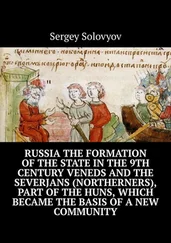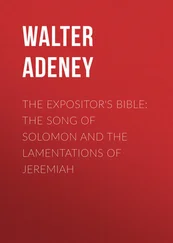Charles Addison - The History of the Knights Templars, the Temple Church, and the Temple
Здесь есть возможность читать онлайн «Charles Addison - The History of the Knights Templars, the Temple Church, and the Temple» — ознакомительный отрывок электронной книги совершенно бесплатно, а после прочтения отрывка купить полную версию. В некоторых случаях можно слушать аудио, скачать через торрент в формате fb2 и присутствует краткое содержание. Жанр: foreign_antique, foreign_prose, на английском языке. Описание произведения, (предисловие) а так же отзывы посетителей доступны на портале библиотеки ЛибКат.
- Название:The History of the Knights Templars, the Temple Church, and the Temple
- Автор:
- Жанр:
- Год:неизвестен
- ISBN:нет данных
- Рейтинг книги:5 / 5. Голосов: 1
-
Избранное:Добавить в избранное
- Отзывы:
-
Ваша оценка:
- 100
- 1
- 2
- 3
- 4
- 5
The History of the Knights Templars, the Temple Church, and the Temple: краткое содержание, описание и аннотация
Предлагаем к чтению аннотацию, описание, краткое содержание или предисловие (зависит от того, что написал сам автор книги «The History of the Knights Templars, the Temple Church, and the Temple»). Если вы не нашли необходимую информацию о книге — напишите в комментариях, мы постараемся отыскать её.
The History of the Knights Templars, the Temple Church, and the Temple — читать онлайн ознакомительный отрывок
Ниже представлен текст книги, разбитый по страницам. Система сохранения места последней прочитанной страницы, позволяет с удобством читать онлайн бесплатно книгу «The History of the Knights Templars, the Temple Church, and the Temple», без необходимости каждый раз заново искать на чём Вы остановились. Поставьте закладку, и сможете в любой момент перейти на страницу, на которой закончили чтение.
Интервал:
Закладка:
When the Holy City was taken by the crusaders, the D’jamé al Acsa , with the various buildings constructed around it, became the property of the kings of Jerusalem; and is denominated by William of Tyre “the palace,” or “royal house to the south of the Temple of the Lord, vulgarly called the Temple of Solomon .” 12 12 Quibus quoniam neque ecclesia erat, neque certum habebant domicilium, Rex in Palatio suo, quod secus Templum Domini ad australem habet partem, eis concessit habitaculum. — Will. Tyr. lib. xii. cap. 7. And in another place, speaking of the Temple of the Lord, he says, Ab Austro vero domum habet Regiam, quæ vulgari appellatione Templum Salomonis dicitur. — Ib. lib. viii. cap. 3.
It was this edifice or temple on Mount Moriah which was appropriated to the use of the poor fellow-soldiers of Jesus Christ, as they had no church and no particular place of abode, and from it they derived their name of Knights Templars. 13 13 Qui quoniam juxta Templum Domini, ut prædiximus, in Palatio regio mansionem habent, fratres militiæ Templi dicuntur. — Will. Tyr. lib. xii. cap. 7.
James of Vitry, Bishop of Acre, who gives an interesting account of the holy places, thus speaks of the Temple of the Knights Templars. “There is, moreover, at Jerusalem another temple of immense spaciousness and extent, from which the brethren of the knighthood of the Temple derive their name of Templars, which is called the Temple of Solomon, perhaps to distinguish it from the one above described, which is specially called the Temple of the Lord.” 14 14 Est præterea Hierosolymis Templum aliud immensæ quantitatis et amplitudinis, a quo fratres militiæ Templi, Templarii nominantur , quod Templum Salomonis nuncupatur, forsitan ad distinctionem alterius quod specialiter Templum Domini appellatur. — Jac. de Vitr. cap. 62.
He moreover informs us in his oriental history, that “in the Temple of the Lord there is an abbot and canons regular; and be it known that the one is the Temple of the Lord , and the other the Temple of the Chivalry . These are clerks , the others are knights .” 15 15 In Templo Domini abbas est et canonici regulares, et sciendum est quod aliud est Templum Domini, aliud Templum militiæ. Isti clerici , illi milites . — Hist. Orient. Jac. de Vitr. apud Thesaur. Nov. Anecd. Martene , tom. iii. col. 277.
The canons of the Temple of the Lord conceded to the poor fellow-soldiers of Jesus Christ the large court extending between that building and the Temple of Solomon; the king, the patriarch, and the prelates of Jerusalem, and the barons of the Latin kingdom, assigned them various gifts and revenues for their maintenance and support, 16 16 Will. Tyr. lib. xii. cap. 7.
and the order being now settled in a regular place of abode, the knights soon began to entertain more extended views, and to seek a larger theatre for the exercise of their holy profession.
Their first aim and object had been, as before mentioned, simply to protect the poor pilgrims, on their journey backwards and forwards, from the sea-coast to Jerusalem; 17 17 Prima autem eorum professio quodque eis a domino Patriarcha et reliquis episcopis in remissionem peccatorum injunctum est, ut vias et itinera, ad salutem peregrinorum contra latronum et incursantium insidias, pro viribus conservarent. — Will. Tyr. lib. xii. cap. 7.
but as the hostile tribes of Mussulmen, which everywhere surrounded the Latin kingdom, were gradually recovering from the stupifying terror into which they had been plunged by the successful and exterminating warfare of the first crusaders, and were assuming an aggressive and threatening attitude, it was determined that the holy warriors of the Temple should, in addition to the protection of pilgrims, make the defence of the christian kingdom of Jerusalem, of the eastern church, and of all the holy places, a part of their particular profession.
The two most distinguished members of the fraternity were Hugh de Payens and Geoffrey de St. Aldemar, or St. Omer, two valiant soldiers of the cross, who had fought with great credit and renown at the siege of Jerusalem. Hugh de Payens was chosen by the knights to be the superior of the new religious and military society, by the title of “The Master of the Temple;” and he has, consequently, generally been called the founder of the order.
The name and reputation of the Knights Templars speedily spread throughout Europe, and various illustrious pilgrims from the far west aspired to become members of the holy fraternity. Among these was Fulk, Count of Anjou, who joined the society as a married brother, (A. D. 1120,) and annually remitted the order thirty pounds of silver. Baldwin, king of Jerusalem, foreseeing that great advantages would accrue to the Latin kingdom by the increase of the power and numbers of these holy warriors, exerted himself to extend the order throughout all Christendom, so that he might, by means of so politic an institution, keep alive the holy enthusiasm of the west, and draw a constant succour from the bold and warlike races of Europe for the support of his christian throne and kingdom.
St. Bernard, the holy abbot of Clairvaux, had been a great admirer of the Templars. He wrote a letter to the Count of Champagne, on his entering the order, (A. D. 1123,) praising the act as one of eminent merit in the sight of God; and it was determined to enlist the all-powerful influence of this great ecclesiastic in favour of the fraternity. “By a vow of poverty and penance, by closing his eyes against the visible world, by the refusal of all ecclesiastical dignities, the Abbot of Clairvaux became the oracle of Europe, and the founder of one hundred and sixty convents. Princes and pontiffs trembled at the freedom of his apostolical censures: France, England, and Milan, consulted and obeyed his judgment in a schism of the church: the debt was repaid by the gratitude of Innocent the Second; and his successor, Eugenius the Third, was the friend and disciple of the holy St. Bernard.” 18 18 Gibbon.
To this learned and devout prelate two knights templars were despatched with the following letter:
“Baldwin, by the grace of the Lord Jesus Christ, King of Jerusalem, and Prince of Antioch, to the venerable Father Bernard, Abbot of Clairvaux, health and regard.
“The Brothers of the Temple, whom the Lord hath deigned to raise up, and whom by an especial Providence he preserves for the defence of this kingdom, desiring to obtain from the Holy See the confirmation of their institution, and a rule for their particular guidance, we have determined to send to you the two knights, Andrew and Gondemar, men as much distinguished by their military exploits as by the splendour of their birth, to obtain from the Pope the approbation of their order, and to dispose his holiness to send succour and subsidies against the enemies of the faith, reunited in their design to destroy us, and to invade our christian territories.
“Well knowing the weight of your mediation with God and his vicar upon earth, as well as with the princes and powers of Europe, we have thought fit to confide to you these two important matters, whose successful issue cannot be otherwise than most agreeable to ourselves. The statutes we ask of you should be so ordered and arranged as to be reconcilable with the tumult of the camp and the profession of arms; they must, in fact, be of such a nature as to obtain favour and popularity with the christian princes.
“Do you then so manage, that we may, through you, have the happiness of seeing this important affair brought to a successful issue, and address for us to heaven the incense of your prayers.” 19 19 Reg. Constit. et Privileg. Ordinis Cisterc. p. 447.
Интервал:
Закладка:
Похожие книги на «The History of the Knights Templars, the Temple Church, and the Temple»
Представляем Вашему вниманию похожие книги на «The History of the Knights Templars, the Temple Church, and the Temple» списком для выбора. Мы отобрали схожую по названию и смыслу литературу в надежде предоставить читателям больше вариантов отыскать новые, интересные, ещё непрочитанные произведения.
Обсуждение, отзывы о книге «The History of the Knights Templars, the Temple Church, and the Temple» и просто собственные мнения читателей. Оставьте ваши комментарии, напишите, что Вы думаете о произведении, его смысле или главных героях. Укажите что конкретно понравилось, а что нет, и почему Вы так считаете.












